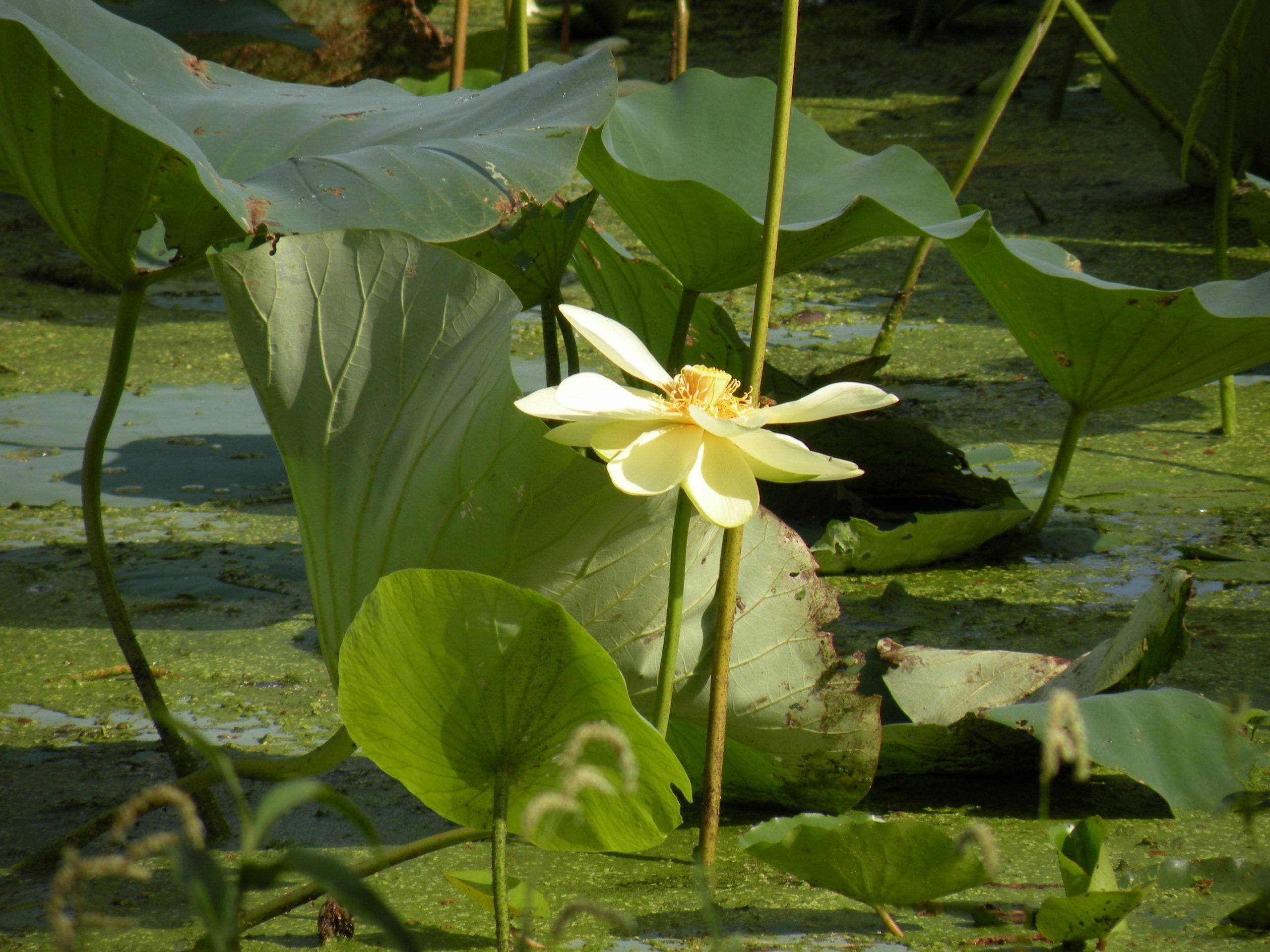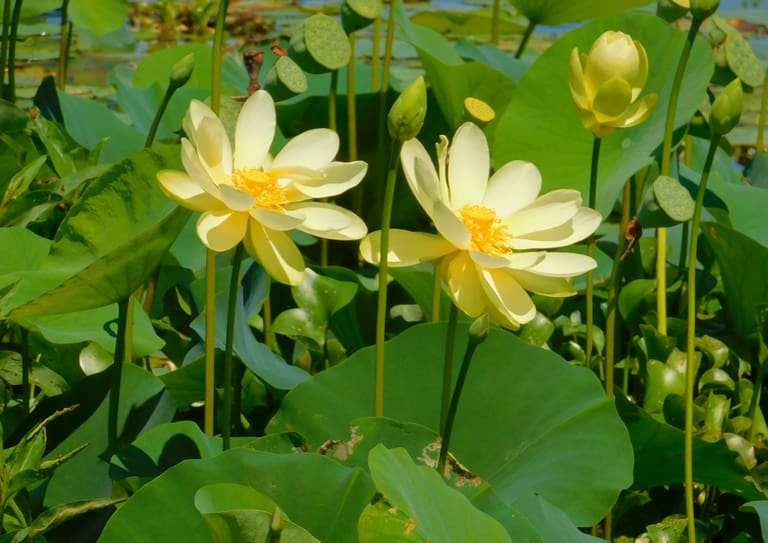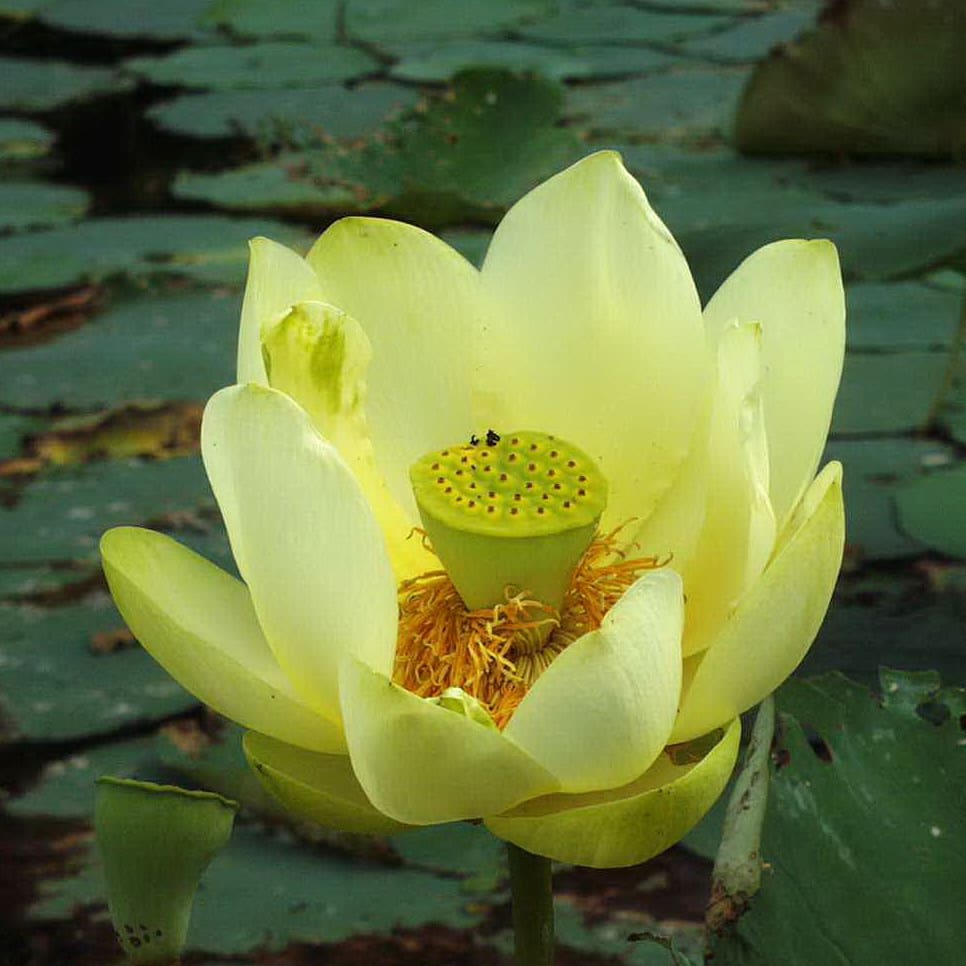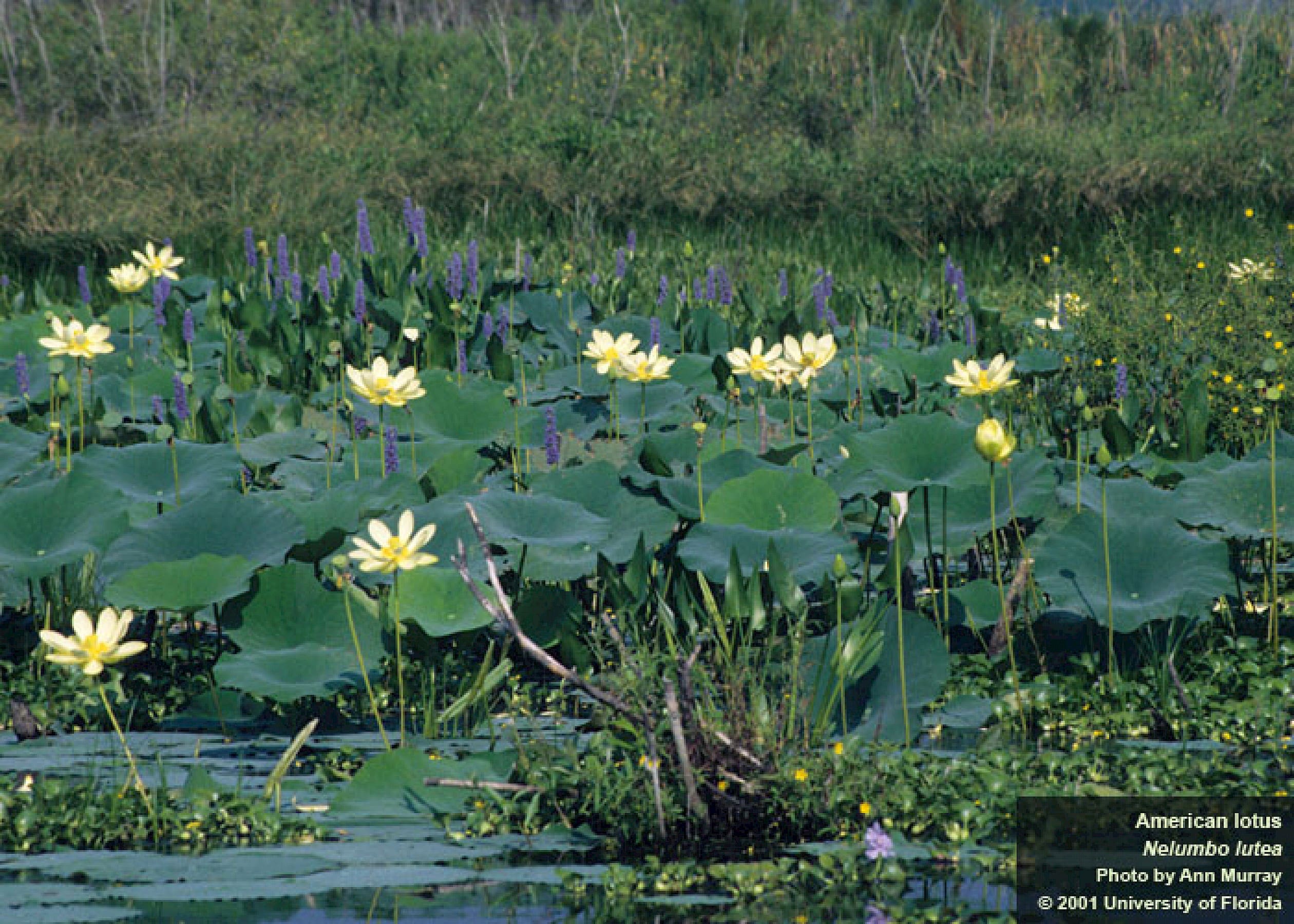At the intersection of botany and aquatic ecosystems exists the intriguing realm of aquatic weeds, the scope of which encompasses the remarkable “Nelumbo lutea”. This article holds a magnifying glass to this peculiar, yet noteworthy aquatic plant. Originating from the Nelumbonaceae family, Nelumbo lutea or the yellow lotus, as it is often termed, finds its habitat in freshwater ponds and slow streams. Its unique characteristics and survival mechanisms lend it considerable attention in ecological studies. As you progress through the upcoming sections, you will explore the botanical particulars, habitat preferences, and the ecological implications of Nelumbo lutea. Buckle up for an enlightening journey through the fascinating world of aquatic plants!

Overview of Nelumbo Lutea
Nelumbo Lutea, part of the Nelumbonaceae family, is a perennial aquatic plant that is endemic to North America. Its common name is the American lotus or yellow lotus, and it is noted for its large, distinct leaves and plate-sized flowers.
Taxonomy and Classification
Nelumbo Lutea falls under the plant kingdom, into the Nelumbonaceae family. It belongs to the Nelumbo genus and holds the scientific name Nelumbo Lutea. The genus name, Nelumbo, is derived from the Sinhalese name ‘nelum,’ referring to its sacred lotus. Lutea, the specific epithet, is Latin, denoting ‘yellow,’ the color of the plant’s petals.
Common Names
The plant is commonly referred to as “American lotus,” “water-chinquapin” or “yellow lotus”. These monikers bear witness to its native geography and distinguishing color features.
Description and Appearance
Nelumbo Lutea denotes striking characteristics. Mature plants can reach a height of up to 6 feet, with a spread of about 20 feet. The leaves are large and circular, reaching up to 2 feet in diameter. The distinct flowers are yellow and can span up to 10 inches across. The plant bears a puckered, conical seed pod that turns from green to a woody brown as it matures.
Distribution: Native and Non-native Habitats
As a native to North America, Nelumbo Lutea flourishes in the eastern part of the continent, thriving from Florida up into Ontario and as far west as Texas. This plant is also found in non-native habitats such as California. It prefers quiet, shallow, warm waters like ponds, lakes, and backwaters of large rivers.
Nelumbo Lutea’s Life Cycle
The life cycle of Nelumbo Lutea is fascinating. It involves processes of germination, growth, reproduction, and survival in response to seasonal changes.
Germination
In its natural habitat, Nelumbo Lutea’s seeds remain dormant throughout winter, triggering germination in the warmth of spring. The seed’s tough outer layer protects it during dormancy and requires scarification, a process of breaking, scratching, or softening, for germination to occur.
Growth and Development
Once germinated, the seedling develops into a sprout, which later transforms into an adult plant. A single leaf emerges first, followed by others, growing directly from the plant’s base. As the plant matures, aerial leaves appear, rising above the water’s surface.
Reproduction and Propagation
Reproduction takes place mostly through seeds and to a lesser extent, through rhizomes. When pollinated by insects or wind, the flowers produce hundreds of seeds encased within a hard seed pod. These seeds are dispersed when the seed pod dehisces or naturally breaks open.
Seasonal Changes and Survival Strategies
Nelumbo Lutea is well-equipped to endure harsh winters. With the arrival of cold temperatures, the plant dies back to its rhizome which can survive winter at the bottom of bodies of water.

Ecological Roles of Nelumbo Lutea
Nelumbo Lutea plays significant roles in the ecosystems it inhabits.
Role in Aquatic Ecosystems
In its aquatic environments, Nelumbo Lutea purifies the water by absorbing pollutants. Furthermore, the plant’s foothold reduces erosion rates, contributing to the stabilization of bodies of water.
Interactions with Other Organisms
The plant offers nourishment and protection to various creatures. Its leaves provide shelter for aquatic organisms and its nectar attracts insects, playing a critical role in those organisms’ survival.
Impact on Aquatic Biodiversity
Despite its benefits, an unchecked proliferation of Nelumbo Lutea, especially in non-native habitats, can threaten aquatic biodiversity. By dominating an area, it can choke out other plant species, leading to a decrease in flora diversity.
Culinary and Medicinal Uses of Nelumbo Lutea
This plant offers various nutritional and medicinal benefits which have been recognized for centuries.
Use in Traditional Medicine
Native American tribes historically used Nelumbo Lutea in traditional medicine. All parts of the plant, from the leaves to roots, were utilized for different medicinal purposes.
Nutritional Value
Its seeds are rich in minerals, proteins, and vitamin C, while its tuberous roots share similarities with potatoes – they are a good source of carbohydrates and fiber. The young leaves can also be consumed as greens.
Culinary Uses
In addition to its health benefits, this plant has indeed found its way into the kitchen. Its seeds can be eaten raw or cooked, while the tuberous roots can be prepared like potatoes – boiled, fried, or roasted.

Nelumbo Lutea as Aquatic Weed
Despite its benefits, Nelumbo Lutea can become a burden when it proliferates excessively.
Challenges in Aquatic Management
Its ability for rapid growth and reproduction, aided by copious seed production, allows it to colonize new areas quickly. This can make management efforts challenging.
Impacts on Human Activities: Fishing, Boating, and Swimming
The plant’s dense populations can obstruct recreational activities on the water like fishing, boating, and swimming. This can negatively impact tourism industries dependent on these activities.
Effects on Water Quality and Aquatic Habitats
Furthermore, unchecked Nelumbo Lutea growth can degrade water quality by causing oxygen depletion, and their decaying plant material could lead to the suffocation of other aquatic plants and animals.
Control and Management of Nelumbo Lutea
Several different strategies can be used for the management and control of Nelumbo Lutea.
Physical Removal Methods
As an immediate measure, physical methods such as mechanical or manual removal of roots, rhizomes, and bulbs can be undertaken to control its growth.
Chemical Control
Chemical herbicides can be applied directly to the plant’s foliage, providing a more extensive control measure. However, it’s essential to minimize potential harm to the surrounding environment and non-target species.
Biological Control Methods
In regions where the plant is not native, biocontrol methods, like the introduction of plant-specific insects or diseases, can be utilized, though these require comprehensive understanding and monitoring.
Integrated Weed Management
A successful management approach might involve combining multiple methods to tackle different stages of the plant’s life cycle.

Cultivation and Care of Nelumbo Lutea
For those who appreciate the aesthetic and ecological benefits of Nelumbo Lutea and wish to encourage controlled growth, several factors need consideration.
Planting Instructions
Seeds should be sown in late winter or early spring. The planting container should be filled with clay soil, water added until it is two inches above the soil, and then seeds placed gently on the soil surface.
Optimal Growing Conditions
These plants flourish in warm, shallow waters, preferably with a pH between 6.1 and 7.5. They also need access to full sun for at least six hours daily.
Care and Maintenance
Once established, Nelumbo Lutea requires minimal care. However, regular removal of dead leaves and flowers should be maintained to discourage disease.
Troubleshooting Common Problems
Issues such as yellowing leaves or limited flowering may indicate a nutrient deficit which can be corrected with proper fertilization strategies.
Conservation Status of Nelumbo Lutea
Though not endangered, several factors affect the conservation status of this plant.
Current Conservation Status
As of now, Nelumbo Lutea is not endangered or threatened. However, habitat alterations and destructive human activities pose a risk to their population.
Threats and Conservation Challenges
The shrinkage of suitable habitats due to urbanization, along with contamination from chemical pollutants, pose primary threats to this plant.
Efforts for Conservation and Recovery
Efforts to conserve these plants generally involve habitat restoration and the imposition of laws to minimize destructive activities.

Cultural Significance of Nelumbo Lutea
Nelumbo Lutea carries deep cultural and religious significance in various societies.
Symbolism in Various Cultures
In Native American tribes, Nelumbo Lutea symbolizes strength and resilience due to its ability to grow from murky depths and bloom bright and beautiful.
Inclusion in Folklore and Mythology
The plant’s distinct lifecycle, of disappearing in winter and resurfacing in spring, has fetched it a spot in many folklore tales as a symbol of rebirth and renewal.
Use in Cultural and Religious Practices
In some traditions, Nelumbo Lutea is used in ceremonies and rituals, as a symbol of purity and divine beauty.
Notable Nelumbo Lutea Species and Varieties
There are numerous varieties, each with distinctive attributes and traits.
Significant Species and Their Traits
One significant species is Nelumbo Lutea ‘Susiana’, characterized by its rich, yellow flowers, and notable for its love of heavy loamy soils.
Unusual Varieties
The Nelumbo Lutea ‘Klamath Rose’, distinguished by its soft pink petals, is an unusual variety, highlighting the plant’s wide genetic diversity.